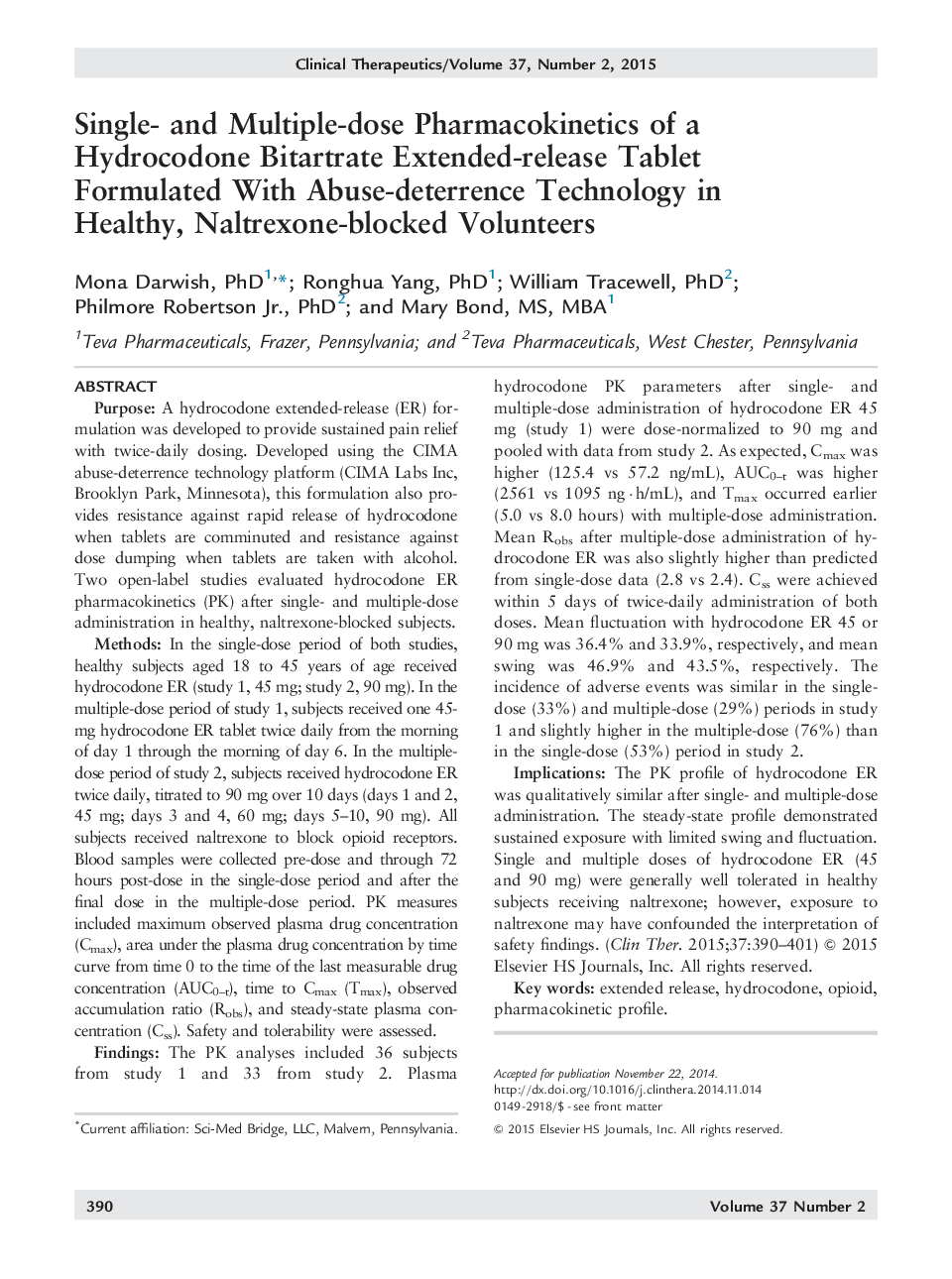| Article ID | Journal | Published Year | Pages | File Type |
|---|---|---|---|---|
| 5824843 | Clinical Therapeutics | 2015 | 12 Pages |
PurposeA hydrocodone extended-release (ER) formulation was developed to provide sustained pain relief with twice-daily dosing. Developed using the CIMA abuse-deterrence technology platform (CIMA Labs Inc, Brooklyn Park, Minnesota), this formulation also provides resistance against rapid release of hydrocodone when tablets are comminuted and resistance against dose dumping when tablets are taken with alcohol. Two open-label studies evaluated hydrocodone ER pharmacokinetics (PK) after single- and multiple-dose administration in healthy, naltrexone-blocked subjects.MethodsIn the single-dose period of both studies, healthy subjects aged 18 to 45 years of age received hydrocodone ER (study 1, 45 mg; study 2, 90 mg). In the multiple-dose period of study 1, subjects received one 45-mg hydrocodone ER tablet twice daily from the morning of day 1 through the morning of day 6. In the multiple-dose period of study 2, subjects received hydrocodone ER twice daily, titrated to 90 mg over 10 days (days 1 and 2, 45 mg; days 3 and 4, 60 mg; days 5-10, 90 mg). All subjects received naltrexone to block opioid receptors. Blood samples were collected pre-dose and through 72 hours post-dose in the single-dose period and after the final dose in the multiple-dose period. PK measures included maximum observed plasma drug concentration (Cmax), area under the plasma drug concentration by time curve from time 0 to the time of the last measurable drug concentration (AUC0-t), time to Cmax (Tmax), observed accumulation ratio (Robs), and steady-state plasma concentration (Css). Safety and tolerability were assessed.FindingsThe PK analyses included 36 subjects from study 1 and 33 from study 2. Plasma hydrocodone PK parameters after single- and multiple-dose administration of hydrocodone ER 45 mg (study 1) were dose-normalized to 90 mg and pooled with data from study 2. As expected, Cmax was higher (125.4 vs 57.2 ng/mL), AUC0-t was higher (2561 vs 1095 ng·h/mL), and Tmax occurred earlier (5.0 vs 8.0 hours) with multiple-dose administration. Mean Robs after multiple-dose administration of hydrocodone ER was also slightly higher than predicted from single-dose data (2.8 vs 2.4). Css were achieved within 5 days of twice-daily administration of both doses. Mean fluctuation with hydrocodone ER 45 or 90 mg was 36.4% and 33.9%, respectively, and mean swing was 46.9% and 43.5%, respectively. The incidence of adverse events was similar in the single-dose (33%) and multiple-dose (29%) periods in study 1 and slightly higher in the multiple-dose (76%) than in the single-dose (53%) period in study 2.ImplicationsThe PK profile of hydrocodone ER was qualitatively similar after single- and multiple-dose administration. The steady-state profile demonstrated sustained exposure with limited swing and fluctuation. Single and multiple doses of hydrocodone ER (45 and 90 mg) were generally well tolerated in healthy subjects receiving naltrexone; however, exposure to naltrexone may have confounded the interpretation of safety findings.
